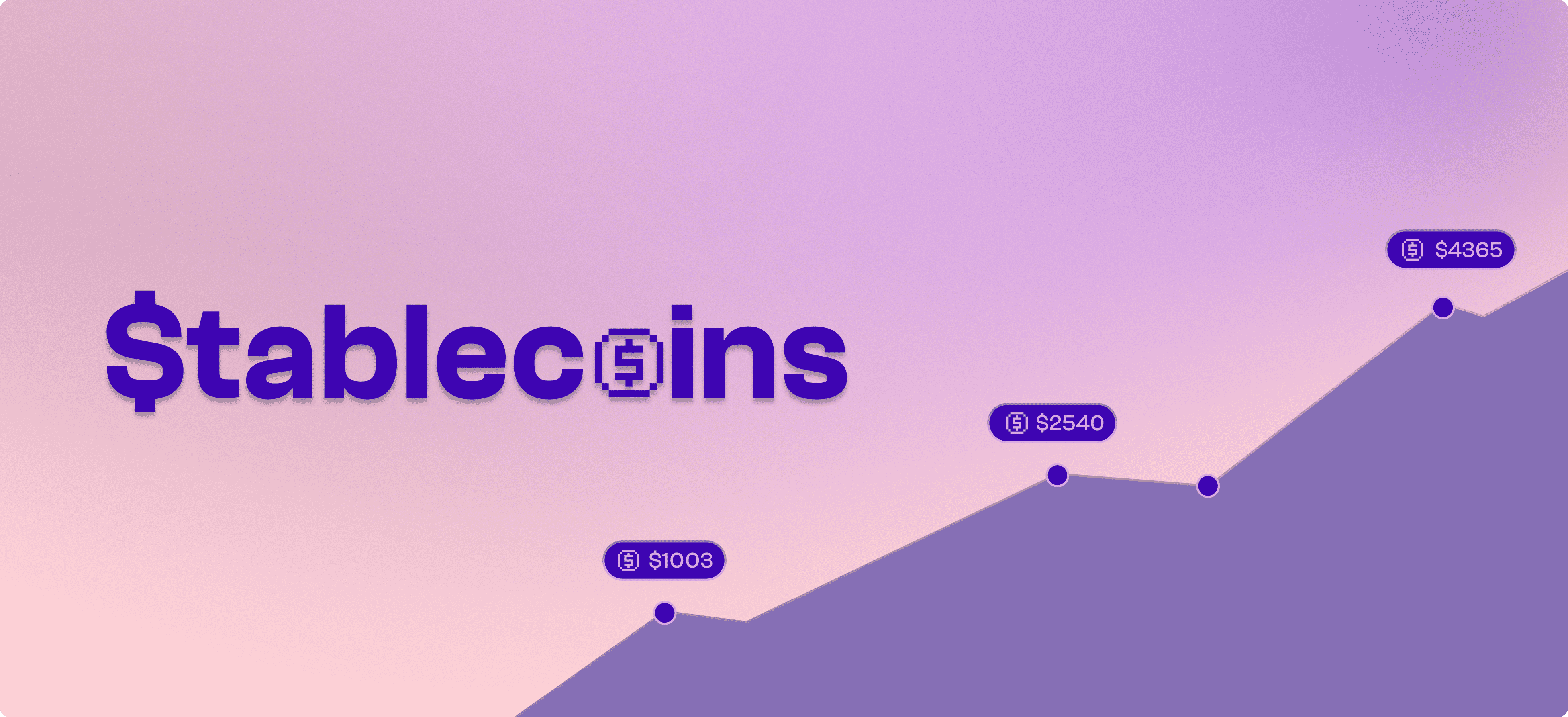A quiet but powerful shift is happening in fintech. It’s not about hype or speculation,
it’s about financial infrastructure. Stablecoins are quickly becoming one of the most essential blocks of this new fintech stack. For years, stablecoins were confined to crypto environments. Today, they are appearing in boardrooms, product roadmaps, and infrastructure strategies. Why? Because stablecoins solve real-world financial problems, and they do it faster, cheaper, and with fewer intermediaries than traditional systems.
What are stablecoins? From hype to real-world utility
Stablecoins are often misunderstood. They’re not a currency replacement or an investment vehicle: they’re programmable money, digital assets that keep a fixed value, usually tied to a currency, which make money transfers faster, cheaper, and more reliable.

According to Visa’s Onchain Analytics Dashboard, stablecoins are steadily moving from niche crypto tools to real-world financial instruments. In 2025, there are already 47 million active users, and supply is approaching $250 billion. Even when adjusting for non-organic activity, the data shows a vibrant and growing ecosystem. This means stablecoins aren’t just an experiment or another crypto-trend, they’re becoming a practical part of the global financial landscape.
This opens the door to a whole new class of fintech products which we’re already seeing play out:
- USD accounts for unbanked or underbanked customers in emerging markets
- Instant settlement between wallets, merchants, and platforms
- Tokenized remittance flows that skip the legacy banking maze
- On-chain cash management and embedded finance rails that work globally, 24/7
The real breakthrough isn’t the coin itself, it’s the abstraction layer companies can build on top of it. Just like cloud computing unlocked new business models, stablecoins are doing the same for fintech. This is why nowadays you’ll hear people ask and look up things like: “how to invest in stablecoins,” “how to buy stablecoins,” or “which are the best stablecoins?”. They are not just curious about the coins themselves or understanding what they are, but about the infrastructure and applications that make them useful.
Why stablecoins matter now
At Vangwe, we work with Fintech companies all around the globe building platforms across payments, wallets, banking-as-a-service, and credit infrastructure. Over the past year, we’ve seen a clear trend: stablecoins are moving from idea to implementation.
Clients are using them to:
- Avoid volatility in local currencies
- Expand into new markets without rebuilding compliance-heavy banking partnerships
- Enable faster, cheaper, and more reliable payouts
In regions where traditional rails are slow or fragmented, such as LATAM, Africa, and Southeast Asia, stablecoins offer not just an alternative but a superior experience. And users don’t care that it’s “on-chain”, they just care that it works. These regions are adopting stablecoins as an effective solution to challenges like inflation, limited access to banking services, and high remittance fees.
For example, in Latin America, countries like Argentina, Venezuela, and Brazil have seen notable growth in stablecoin adoption. According to Chainalysis, in 2024, the region received nearly $415 billion in cryptocurrency inflows, up 42.5% from the previous year. Stablecoins provide a stable alternative to volatile local currencies and enable faster, cheaper remittances.

In Southeast Asia, stablecoins are increasingly used for payments, savings, and cross-border transfers, fueled by growing digital connectivity and fintech adoption. As stated by Mārtiņš Beņķītis, CEO of Gravity Team, USDC is being used by small e-commerce merchants to receive instant payments from both domestic and international customers, bypassing slow bank settlement cycles and high remittance fees.
The rise of stablecoins in these regions shows exactly why they matter now. It's not just about efficiency, it’s about global financial inclusion: they’re helping people and businesses navigate volatile currencies and limited banking access, proving that stablecoins are already reshaping global finance.
Infrastructure is the real opportunity
As stablecoins move from something conceptual to a real-world used tool, the true opportunity for fintech and development companies isn’t in the coins themselves, it’s in the systems that enable them. The companies that win in this space won’t necessarily be the ones minting tokens or building wallets. They’ll be the ones building the infrastructure, APIs, compliance layers, accounting systems, and UX that let any fintech use stablecoins without needing to be a blockchain company.
At Vangwe we’re already helping clients:
- Design stablecoin-native treasury flows
- Connect with custodians, on-ramps, and off-ramps
- Integrate stablecoin payments alongside traditional providers like Stripe, MPGS or Adyen
Major corporations are also jumping on board onto building infrastructure that makes stablecoins usable at scale. Visa, for example, has expanded its settlement platform to support multiple stablecoins, including USDG, PYUSD, and EURC, across chains like Stellar and Avalanche, enabling faster, cheaper, and more reliable payments for issuers and acquirers. Stripe has integrated USDC and USDB into its platform, letting businesses hold stablecoin balances, receive funds in both crypto and fiat, and pay almost anywhere globally. Additionally, Stripe partnered with Bridge to launch a Visa card linked to stablecoins in Latin America, making everyday crypto payments. It’s not about replacing what works, it’s about expanding what’s possible
It’s early: that’s the advantage.
The stablecoins space is still wide open. The technology is mature, the demand is clear, and regulations are evolving rapidly. For fintech founders, that’s the sweet spot for innovation: enough clarity to build, enough uncertainty to create an edge.

